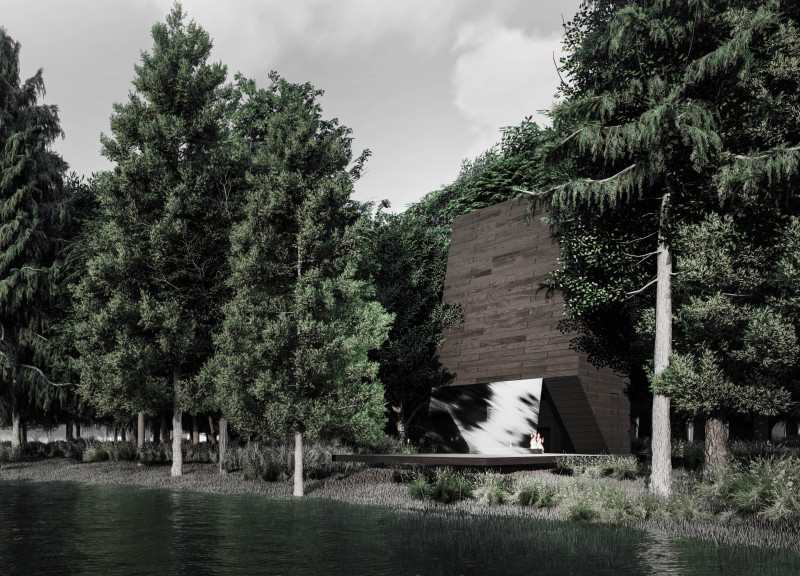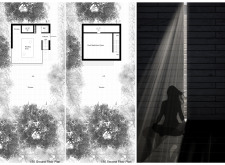5 key facts about this project
The architectural project "Dark Room" is designed as a meditation retreat emphasizing self-reflection and engagement with one's inner thoughts. Situated amid natural landscapes, the retreat's design promotes isolation from distractions, creating an environment that nurtures contemplation and tranquility. The structure encompasses multiple spaces for rest, meditation, and interaction with nature, strategically designed to foster a profound connection between individuals and their surroundings.
Unique Spatial Organization and Design Features
One of the hallmark features of the "Dark Room" is its unique spatial organization. The project consists of distinct areas: a dark meditation room, a nature-view room, and a terrace. The ground floor includes a storage area and a comfortable resting area while the second floor is dedicated to the meditation room, which is specifically designed to achieve complete darkness. This unique feature allows users to immerse themselves fully in meditation practices without external visual distractions.
The architectural design employs a slanted roof that facilitates interaction with the surrounding trees and landscape. This structural choice not only helps protect the environment but also enhances the aesthetic appeal of the building. By utilizing traditional wood, stone, and glass in its material palette, the project promotes sustainability and integrates seamlessly into its natural context. The materials contribute to the warmth and durability of the structure while supporting the overall philosophy of harmony with nature.
Integration with Nature and Spiritual Function
The positioning of the "Dark Room" near a lake further enriches its spiritual function. The design encourages users to engage with both designed pathways and untouched nature, allowing for immersive experiences that support mental well-being. A thoughtful approach to lighting plays a key role in the user experience; carefully positioned openings control light entry, establishing varying atmospheres throughout the day.
The project does not only cater to individual meditation but also accommodates communal spaces for gatherings and collective spiritual experiences. This dual-functionality adds depth to the project, reinforcing the significance of both solitude and community in promoting mental and spiritual health.
The "Dark Room" represents a fusion of architectural integrity and a profound understanding of user experience. By prioritizing meditation, nature, and community interaction, this design stands apart from conventional retreat structures. For a deeper understanding of the architectural plans and sections, readers are encouraged to explore the project presentation. Detailed insights into the architectural designs and ideas underscore the intentionality and thoughtfulness embedded in this unique meditation retreat.






















































